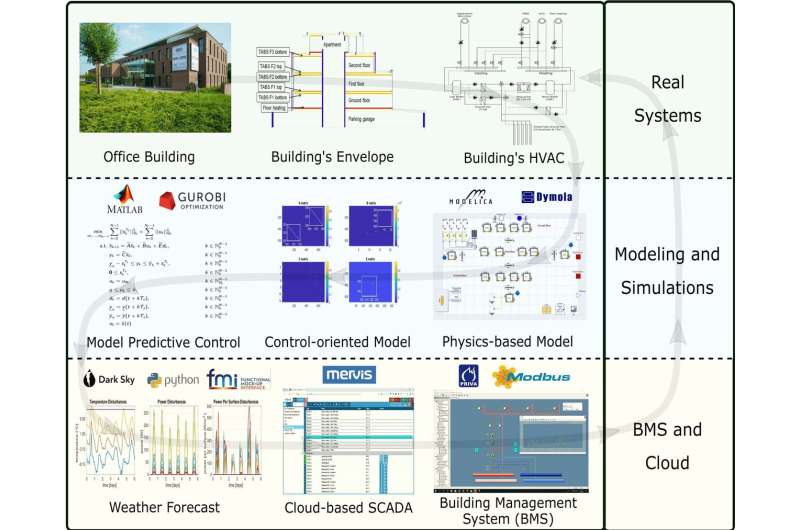Deep learning cuts costs in building control

American buildings consume roughly 40 percent of U.S. energy, much of which is expended on heating, cooling, and ventilation. Enhanced control methods can help reduce energy consumption. Model Predictive Control (MPC) has shown potential for substantially reducing energy use in buildings. However, it has not been widely adopted due to a number of implementation challenges.
Recently, PNNL has demonstrated that deep learning can be used to overcome some of these challenges, paving the way for wider adoption of MPC in buildings. "For successful application in buildings, the method must be less expensive and easier to implement, and that has been the focus of our work," explains Jan Drgona, a PNNL postdoctoral research associate.
Traditional physics-based MPC and its challenges
MPC optimizes control over a receding time horizon, and in a building the method may optimize control for the next 24 hours in 15-minute intervals. MPC would use a model of the building to evaluate its performance over the next 24 hours under different control strategies for fixed occupancy and weather assumptions. The control settings for the first 15 minutes are implemented, the building's response is measured, and the process is repeated with updated initial conditions and weather predictions.
A critical part of MPC is the model itself. MPC was initially used to optimize industrial chemical processes through physics-based models. Physics-based MPC has also proven effective in buildings. In fact, field testing conducted by KU Leuven University in an office building in Belgium showed energy savings of up to 50 percent. MPC also improved thermal comfort in the building by keeping the temperatures closer to prescribed bounds, which can improve occupant productivity and well-being.
Deployment of MPC in a large portion of the building stock has not been possible because of high installation costs. Every building is unique and requires its own custom physics-based model. Physics-based models are computationally expensive, limiting the number of control strategy alternatives that can be explored and often requiring dedicated hardware.
A potential solution?
A research team of Jan Drgona, Draguna Vrabie of PNNL, and Lieve Helsen of KU Leuven has developed an approach that overcomes the computational challenges of MPC. The team used physics-based MPC to train deep learning neural network models.
The neural networks models yield control actions that closely approximate those produced by physics-based MPC but do so much more quickly while using significantly less computing power. In lay terms, the researchers are teaching the cheap apprentice (neural network) to imitate the behavior of the much more expensive expert (physics-based MPC).
"We end up with a high-performing intelligent controller with just a fraction of the execution cost of classical Model Predictive Control," Drgona says.
He adds, "There is much work that remains to be done to achieve robust, scalable methods applicable to large-scale building systems. By applying these methods, we are on track to reduce engineering costs and achieve a generic solution that is broadly available to the building control community."
Drgona and colleagues discussed their methods in "Stripping Off the Implementation Complexity of Physics-based Model Predictive Control for Buildings Via Deep Learning." This paper was presented in a workshop session at the Conference on Neural Information Processing Systems in Vancouver, Canada, in December 2019.
More information: Stripping off the implementation complexity of physics-based model predictive control for buildings via deep learning. www.researchgate.net/publicati … gs_via_deep_learning
















